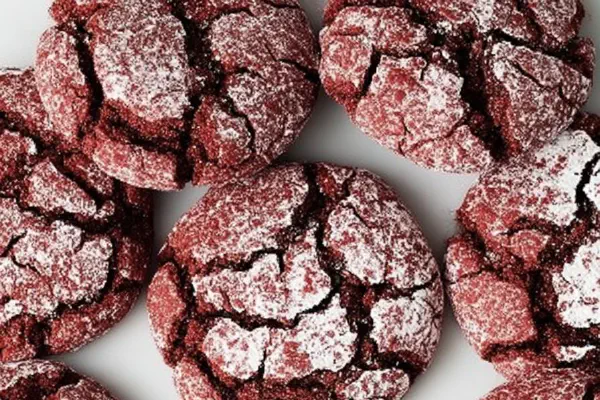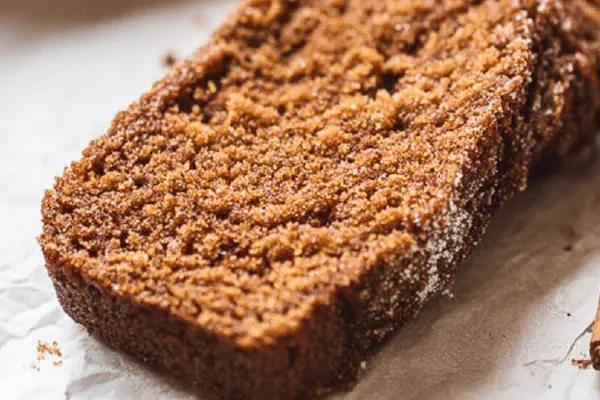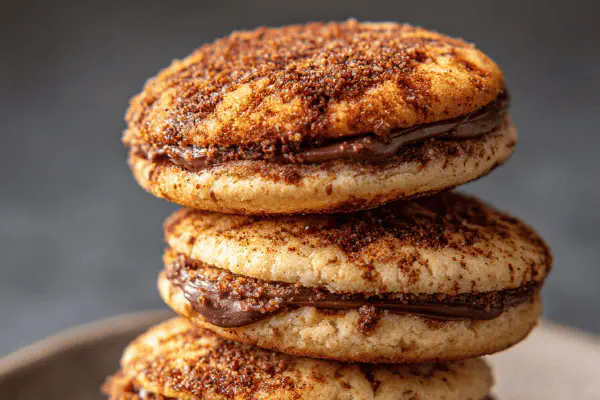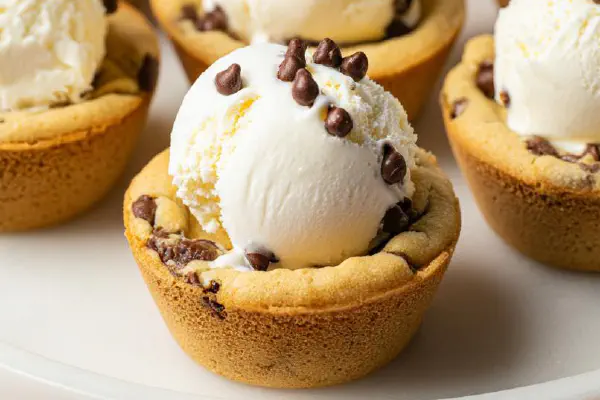Gingerbread Snickerdoodles
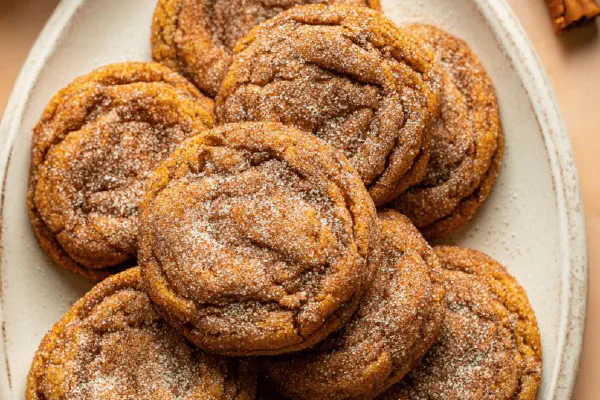
By Emma
Certified Culinary Professional
Ingredients
- 2 1/2 cups all-purpose flour
- 2 tsp ground ginger
- 1 tbsp ground cinnamon
- 1 tsp cream of tartar
- 1/2 tsp salt
- 1/2 tsp baking soda
- 1/4 tsp baking powder
- 1/4 tsp ground cloves
- 1/4 tsp ground nutmeg
- 3/4 cup unsalted butter softened
- 1 cup packed light brown sugar
- 3/4 cup molasses
- 1 large egg
- 1 large egg yolk
- 1 tsp vanilla extract
- 1/3 cup granulated sugar
- 1 tbsp ground cinnamon
About the ingredients
Method
- Line two baking sheets either with parchment paper or silicone mats, set aside. Don’t overlook this step — stop dough from sticking.
- In medium bowl, whisk flour, ginger, cinnamon, cream of tartar, salt, baking soda, baking powder, cloves, nutmeg till fully mixed. Dry mix is your flavor backbone — no clumps.
- Stand mixer with paddle, beat softened butter and brown sugar starting low, then medium speed, 4-5 minutes. Scrape bowl sides often for even mix. Will look thick, almost paste-like.
- Stop mixer. Add molasses carefully (if mixer on, expect a sticky mess flying), mix just till blended. Moisture balanced here.
- Add whole egg, extra yolk, and vanilla. Mix till smooth but no overbeating. Overdoing breaks air pockets.
- Drop dry ingredients in gradually to avoid overmixing. Just combine till no flour specks. Overworked dough = tough cookies.
- Use 2 Tbsp scoop for uniform size. Place dough balls on a plate or sheet; chill 30-60 minutes minimum or overnight. Cold dough = less spreading, better texture.
- Mix granulated sugar and cinnamon in small bowl. Preheat oven to 345°F (a few degrees lower than typical 350). Slightly lower temp tames over-browning with molasses.
- Roll chilled dough balls generously in cinnamon sugar, get them fully coated for crisp edges, flavor burst.
- Place coated balls on prepared sheets, spaced well. Bake 11-12 minutes max. Cookies rise and puff, very soft when out. If edges brown too fast, turn down oven by 5 degrees next time.
- Cool on baking sheet 3-4 minutes — they’ll firm slightly but still pliable. Then transfer carefully to wire rack to cool completely. Laid off heat, no fight with warm, fragile dough.
- Swirl cookies gently on baking sheet just out of oven to perfect circles if needed — trick learned after dozens ruined by uneven shapes.
- Sprinkle leftover cinnamon sugar on top before serving, adds crunch and extra aroma.
Cooking tips
Chef's notes
- 💡 Cream butter and packed brown sugar thoroughly. Scrape sides often. Air trapped here makes crumb soft not dense. Not creamed enough? Tough, dry. Melted butter ruins structure. Room temp butter key. Thick paste shows right stage before molasses.
- 💡 Add molasses off mixer or very low speed else sticky splash. Molasses heavy, grabs fast, mess risk high. Mixing just till blended, no overwork or sticky mess. Molasses impacts color and chew. Use unsulphured dark best but dark corn syrup works if desperate.
- 💡 Chill dough twice. Before scooping firms fat so dough handles better. After portioning tightens shape stops too much spread. Cold dough = thick cookies, chewy centers. Warm dough = flat, crispy but brittle. Patience pays for texture control.
- 💡 Oven temp slightly lower, 345°F instead 350°F. Molasses sugars burn faster. Watch last 3-4 minutes close. Cookies puff, edges brown first. If edges darken too quick turn down 5°. Center feel shiny but puffed. Touch test: slow spring back, not raw goo.
- 💡 Cinnamon sugar coating thick and even. Rolls fully cover dough balls for crisp edges. Not just sprinkle. Mix sugar with more cinnamon than usual if you want bigger spice punch. Coating adds crunch and aroma lifts up once baked. Don’t skip that step.
Common questions
Why chill dough twice?
First chill firms fat, easier to scoop no mess. Second chill keeps shape, stops spreading in oven. Without? Cookie ends thin and crispy, lacking chew. Chill time varies from half hour to overnight. Texture changes big depending on that.
Can I substitute molasses?
Dark corn syrup close but loses depth. Lighter syrups mess color and flavor. Unsulphured molasses best for chew and rich tone. If no molasses, cookies still happen but different chew, browning, aroma. Adjust oven temp maybe lower even more then.
Edges burn too fast while centers raw?
Drop oven temp 5 degrees, rotate pans mid bake. Thin bottoms from baking sheet types too hot. Use parchment or silicone mats for even heat distribution. Spreading relates too to dough temp, chilled dough helps slow spread reducing edge burn.
How to store cookies?
Airtight container with parchment paper layering keeps crisp edges without soggy traps. Freeze dough balls pre-bake, thaw then roll in cinnamon sugar. Baked cookies freeze wrapped well. In fridge? OK short term but may dry edges. Real talk: eat fast for best texture.
